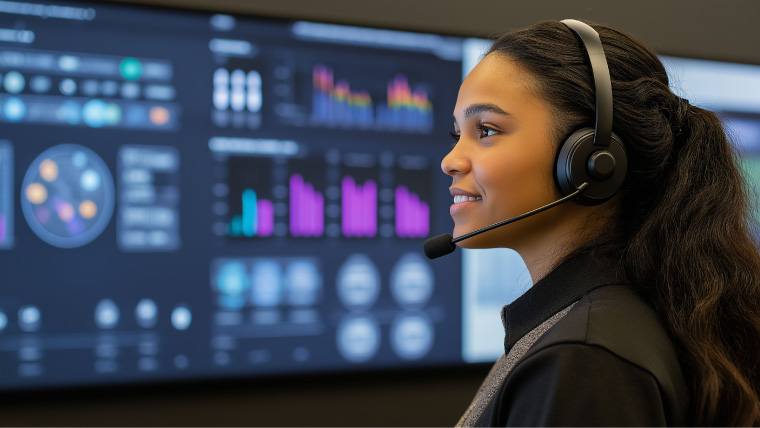Presented by Gordon Littley
Managing Director, Global Customer Experience Practice
Verizon
In recent years customer personalization has become ubiquitous. Consumers have come to expect a growing variety of customized experiences. Today, they are even willing to change brands to make sure they get them. And that means the time has come for organizations to up their game when it comes to customer personalization. Some companies already offer gratifying customized experiences that elevate their brand, but most need to come up to speed. Consumers around the globe aren’t just ready for personalization; they’re starting to demand it, according to a study by Longitude for Verizon.
Consumers have little patience for technology that doesn’t deliver. They expect efficiency, speed, convenience and easy-to-use interfaces. And if you ask them for personal information, they want something in return. Nearly half of study participants (47%) say they would do business again with an organization that delivers a personalized, intuitive customer experience (CX) even if they could get a better price from a competitor. And 38% say sharing personal data is worth receiving customized experiences in return – a clear indication that organizations have the opportunity to improve their reputation by providing value in exchange for personal data.
Getting customer personalization right
To succeed, CX initiatives must align with customers’ wants and needs and be able to personalize the experience. Retailers have been working on this for years, and now industries such as banking, hospitality, sports and entertainment are taking cues from the retail sector to build their own customer personalization programs.
Data is key to providing a customized experience to a consumer. And data can stream in from multiple sources including websites, social media platforms, Internet of Things (IoT) sensors, point of sale (POS) systems and WiFi networks. Collecting data is only half of the equation. The other, harder half is to determine what data to filter out and how to act on what’s left.
Effective customized experiences require data from both online and offline sources. Customers typically don’t perform tasks only online or in physical locations. For instance, a retail customer might conduct research online but prefer to complete purchases in store, or a banking customer will check account balances online while making deposits in person.
Data captured online provides insights such as when customers visit websites, what pages they gravitate to and whether the visits are transactional or for information gathering. Data captured in physical locations through POS and cash management systems, IoT sensors or Wi-Fi networks is key to building customer personas for organizations to design services tailored to specific groups and even individual tastes.
For instance, in-store data delivers insights on how much time customers spend in which aisles, what items they purchase on-site vs. online and whether they redeem store coupons. Over time, organizations can build a picture of what a customer values and how their tastes and preferences evolve, which will help them provide a customized experience.
Multichannel strategies
Data collected about tastes and preferences also allows brands to create a unique digital identity for each customer to ensure they are recognized across multiple channels. As consumers interact with a brand, all their interactions must be connected in a multichannel experience. Seamless multichannel services are central to customer personalization, allowing consumers to engage with a company through the channels and devices they prefer.
Though they may have a preference, customers don’t want to get stuck with one channel. Longitude found that 60% of consumers want to be able to switch between channels easily. Organizations, therefore, must go beyond multichannel to offer an omnichannel strategy that allows all channels to “cooperate.”
A seamless hand-off between channels is necessary so customers don’t have to start at the beginning if they change channels during a session. With omnichannel, customers don’t have to re-authenticate their identity when they switch. So when a person starts an online transaction with a laptop computer at lunchtime and later switches to a mobile app, it should be seamless.
Traditional channels still matter
The Longitude study found consumers have an interest in communicating through new technologies such as wearable devices, mobile apps and voice-activated personal assistants, but consumers aren’t ready to let go of traditional methods such as the telephone and email.
Asked in the Longitude study to name their preferred methods of interaction, 59% of consumers cited email, 54% picked the telephone and 39% selected in-person interaction. This compares to 7% for voice-activated assistants and 12% for online chatbots. However, new technologies such as mobile apps and wearables were cited by 47% of consumers.
Blending the old with the new, with an emphasis on traditional methods – at least for the time being – is the way to go in developing multichannel customer personalization strategies. Of course, the emphasis on newer digital technologies is sure to grow as the younger generations take over.
But don’t forget speed and convenience. When it comes right down to it, they are what the majority of consumers value most: 63% of consumers care less about the channel they are using than how quickly and easily it lets them accomplish their tasks.
Differentiation through Customer Personalization
Customer personalization is going to be the big differentiator between brands for the foreseeable future. Most companies still have a considerable amount of work to get it right, but the time is running short to launch personalized CX now that customers have started to demand it.
Since 47% of consumers say they like the use of technologies such as virtual reality to bring a product to life, companies should be thinking about how they can combine traditional experiences with those enabled by new and evolving technology to better compete in the marketplace.
Consumers are ready for personalization. Are you? If you don’t have a customer personalization strategy – or a plan to develop one – you may soon find yourself at a disadvantage against competitors.
Learn more about winning the CX war in our study “Winning the CX War: The risks and rewards of next-generation CX.”
Gordon Littley is the CX Innovator and Practice Leader for Verizon.



